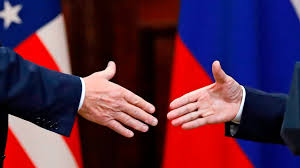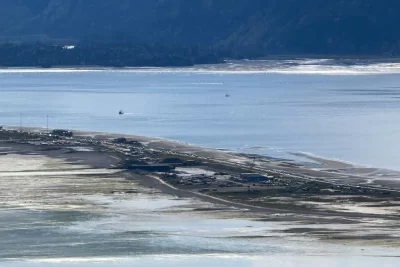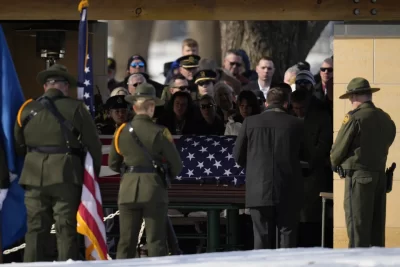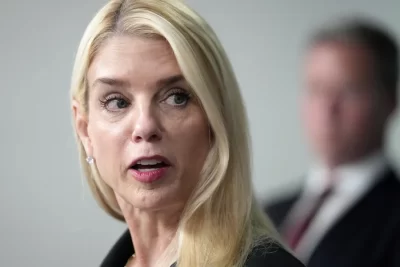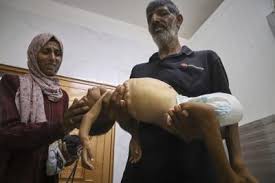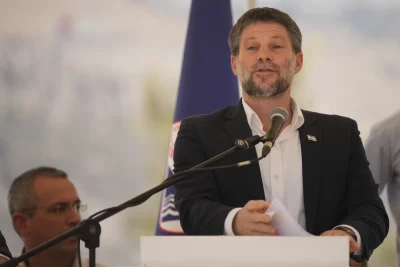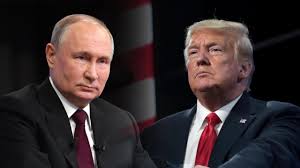
US President Donald Trump and his Russian counterpart Vladimir Putin are set to meet in Anchorage on Friday to discuss how to end the war in Ukraine.
The venue for the high-profile meeting is Joint Base Elmendorf-Richardson – a US military installation on the northern edge of Alaska’s most-populated city.
White House officials have said the base satisfied security requirements for hosting two world leaders. And, during the height of summer tourism, there were few other options for the hastily arranged meeting.
Three rounds of talks between Russia and Ukraine this summer, held at Trump’s behest, have yet to bring the two sides any closer to peace.
Here is what we know about the base, and what we can expect from the meeting.
What is Joint Base Elmendorf-Richardson?
With roots tracing back to the Cold War, Joint Base Elmendorf-Richardson is Alaska’s largest military base. The 64,000 acre installation is a key US site for Arctic military readiness.
Snow-capped mountains, icy lakes and picturesque glaciers frame the base, which regularly shivers through temperatures as low as -12C (15F) in winter. However the leaders can expect comparatively pleasant temperatures of around 16C (61F) on Friday.
When Trump visited the base during his first term, in 2019, he said the troops there “serve in our country’s last frontier as America’s first line of defence”.
More than 30,000 people live on the site, accounting for approximately 10% of the population of Anchorage.
Built in 1940, the base was a critical air defence site and central command point to ward off threats from the Soviet Union during the Cold War.
At its peak in 1957, it hosted 200 fighter jets, and multiple air traffic control and early warning radar systems, earning it the nickname of “Top Cover for North America”.
The base continues to grow today due to its strategic location and training facilities.
Why are they meeting in Alaska?
The US purchased Alaska from Russia in 1867, lending a historical resonance to the meeting. It became a US state in 1959.
Russian presidential assistant Yuri Ushakov pointed out that the two countries are neighbours, with only the Bering Strait separating them.
“It seems quite logical for our delegation simply to fly over the Bering Strait and for such an important and anticipated summit of the leaders of the two countries to be held in Alaska,” Ushakov said.
The last time Alaska took centre-stage in an American diplomatic event was in March 2021, when Joe Biden’s newly minted diplomatic and national security team met their Chinese counterparts in Anchorage.
The sit-down turned acrimonious, with the Chinese accusing the Americans of “condescension and hypocrisy”.
Why are Putin and Trump meeting?
Trump has been pushing hard – without much success – to end the war in Ukraine.
As a presidential candidate, he pledged that he could end the war within 24 hours of taking office. He has also repeatedly argued that the war “never would have happened” if he had been president at the time of Russia’s invasion in 2022.
Last month, Trump told the BBC that he was “disappointed” by Putin.
Frustrations grew and Trump set an 8 August deadline for Putin to agree to an immediate ceasefire or face more severe US sanctions.
As the deadline hit, Trump instead announced he and Putin would meet in person on 15 August.
The meeting comes after US Special Envoy Steve Witkoff held “highly productive” talks with Putin in Moscow on Wednesday, according to Trump.
Ahead of the meeting, the White House sought to play down speculation that the bilateral could yield a ceasefire. White House Press Secretary Karoline Leavitt described it as a “listening exercise”.
Speaking to Fox News Radio on Thursday, Trump said there is a “25% chance that this meeting will not be a successful meeting”.
US Secretary of State Marco Rubio said Trump would enter the meeting with the goal of reaching a ceasefire deal, but a wider peace agreement would take more time.
“To achieve a peace, I think we all recognise that there’ll have to be some conversation about security guarantees,” he told reporters at the state department on Thursday. “There’ll have to be some conversation about… territorial disputes and claims, and what they’re fighting over.”

